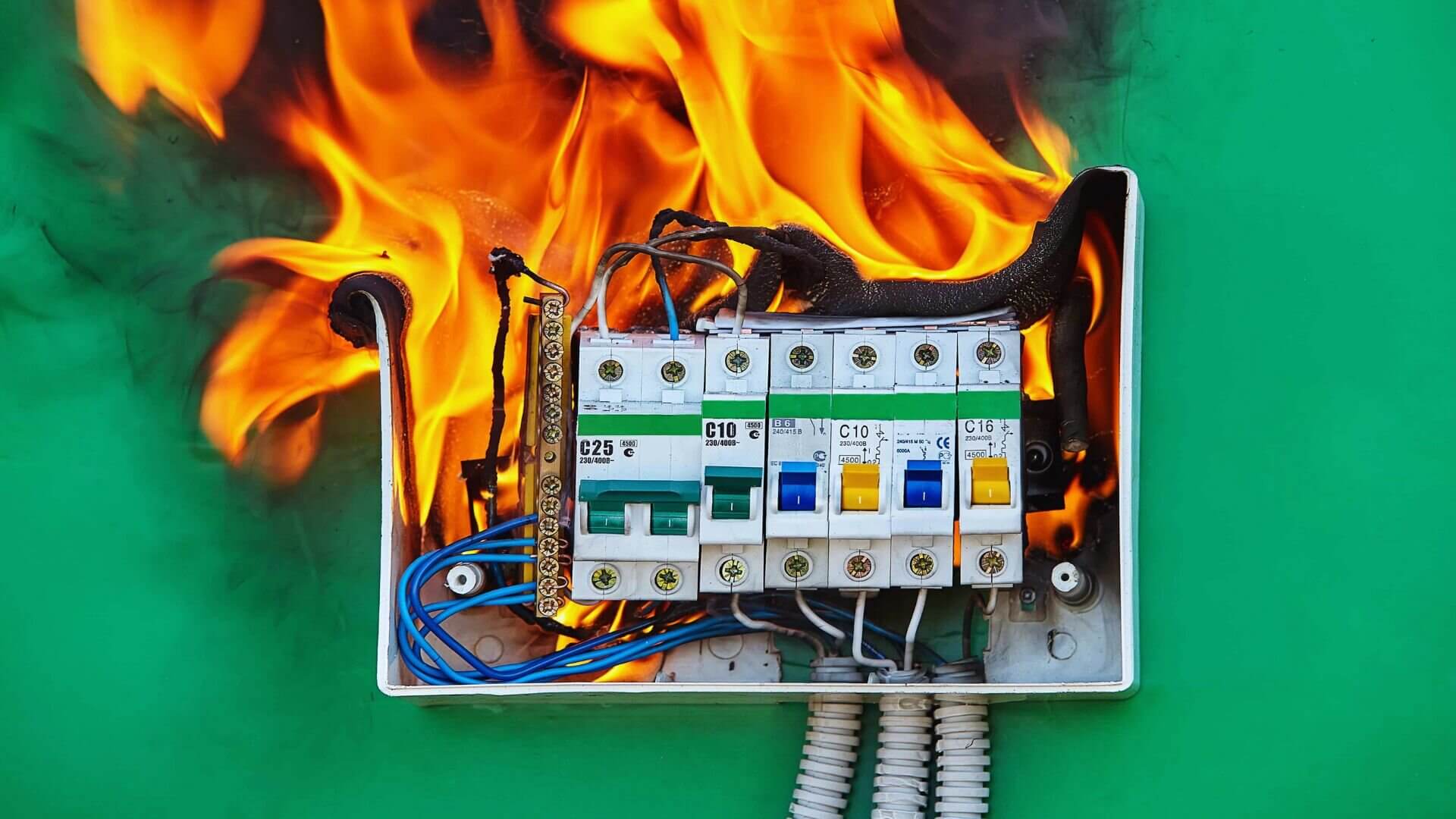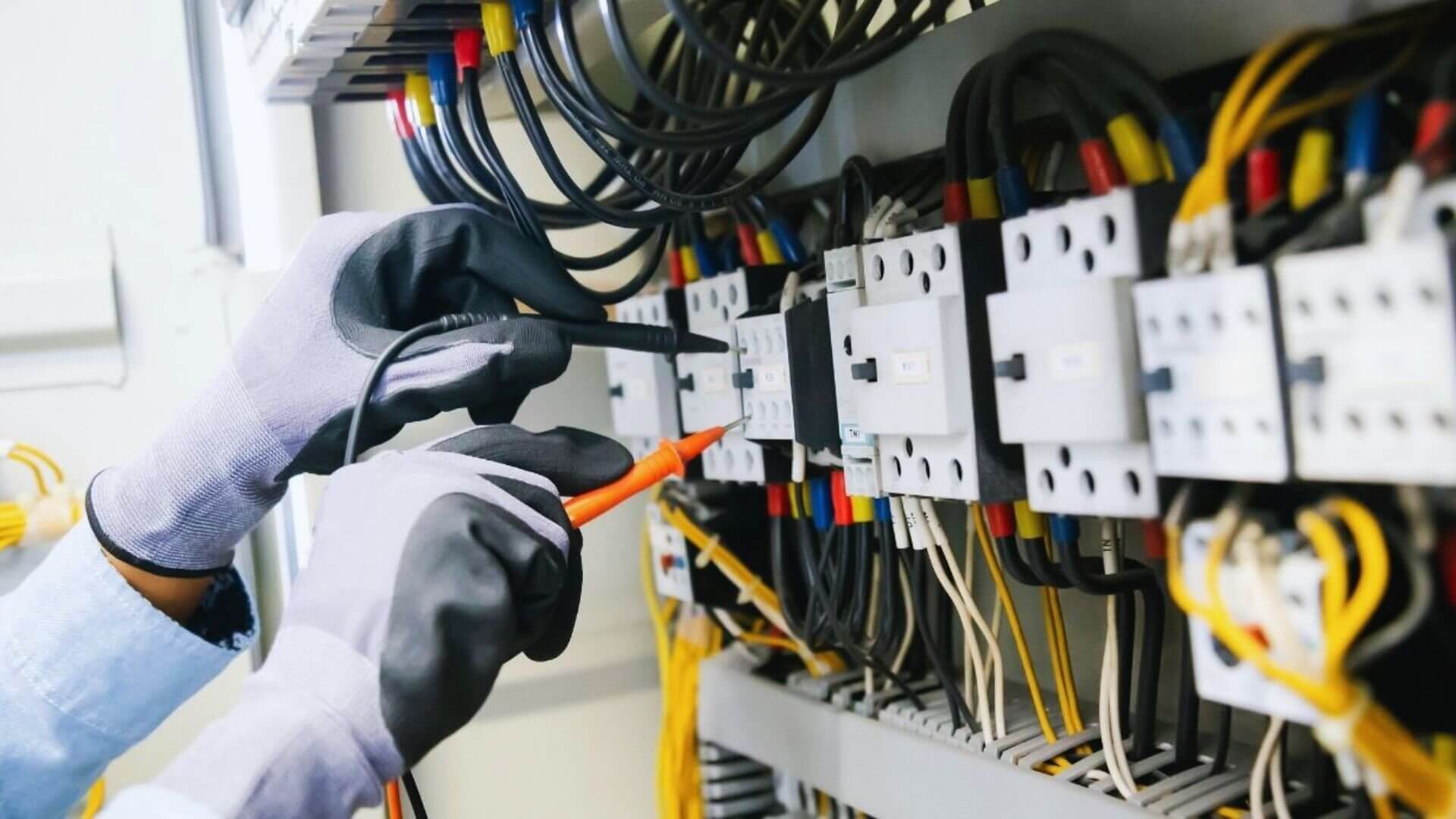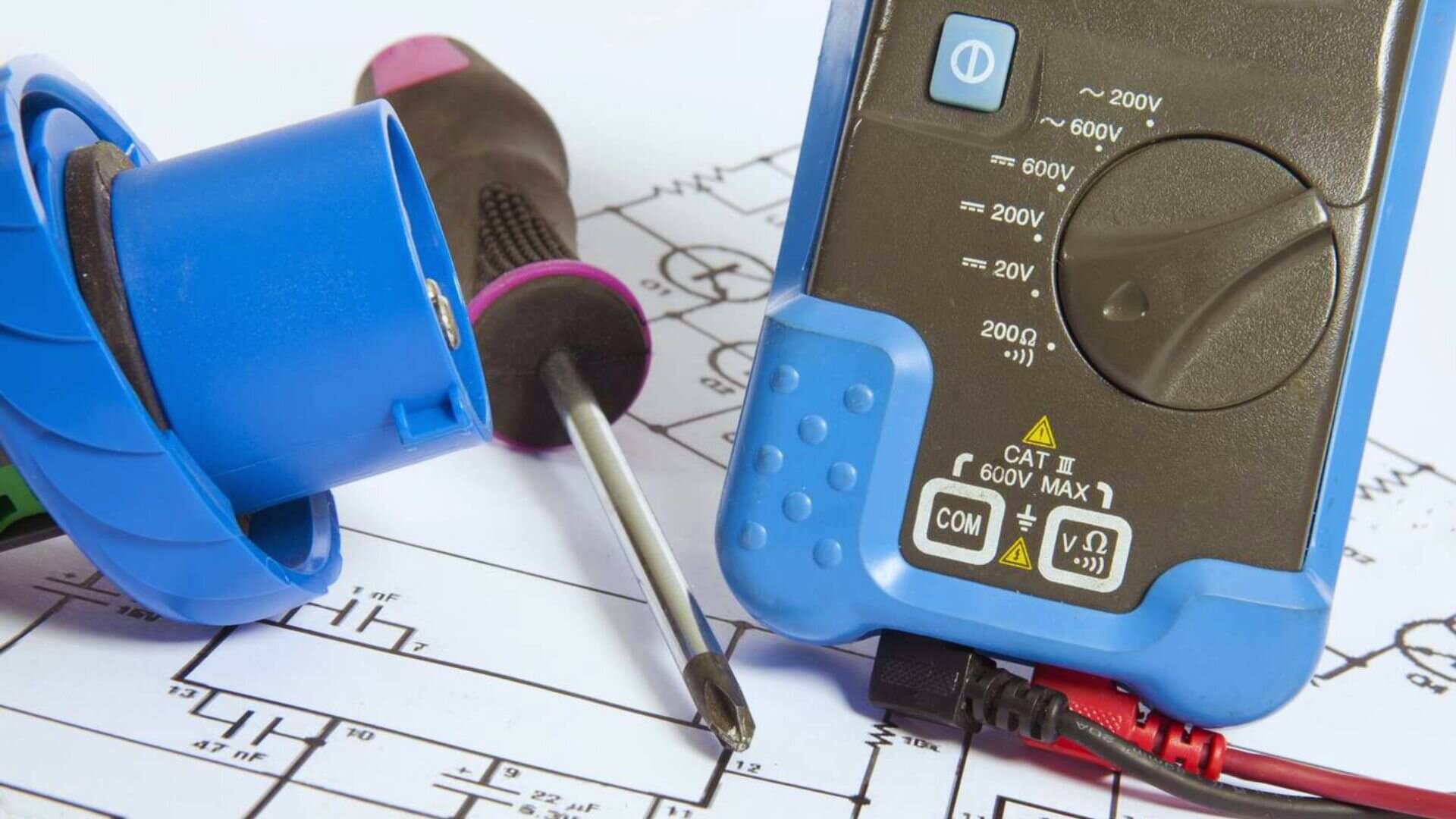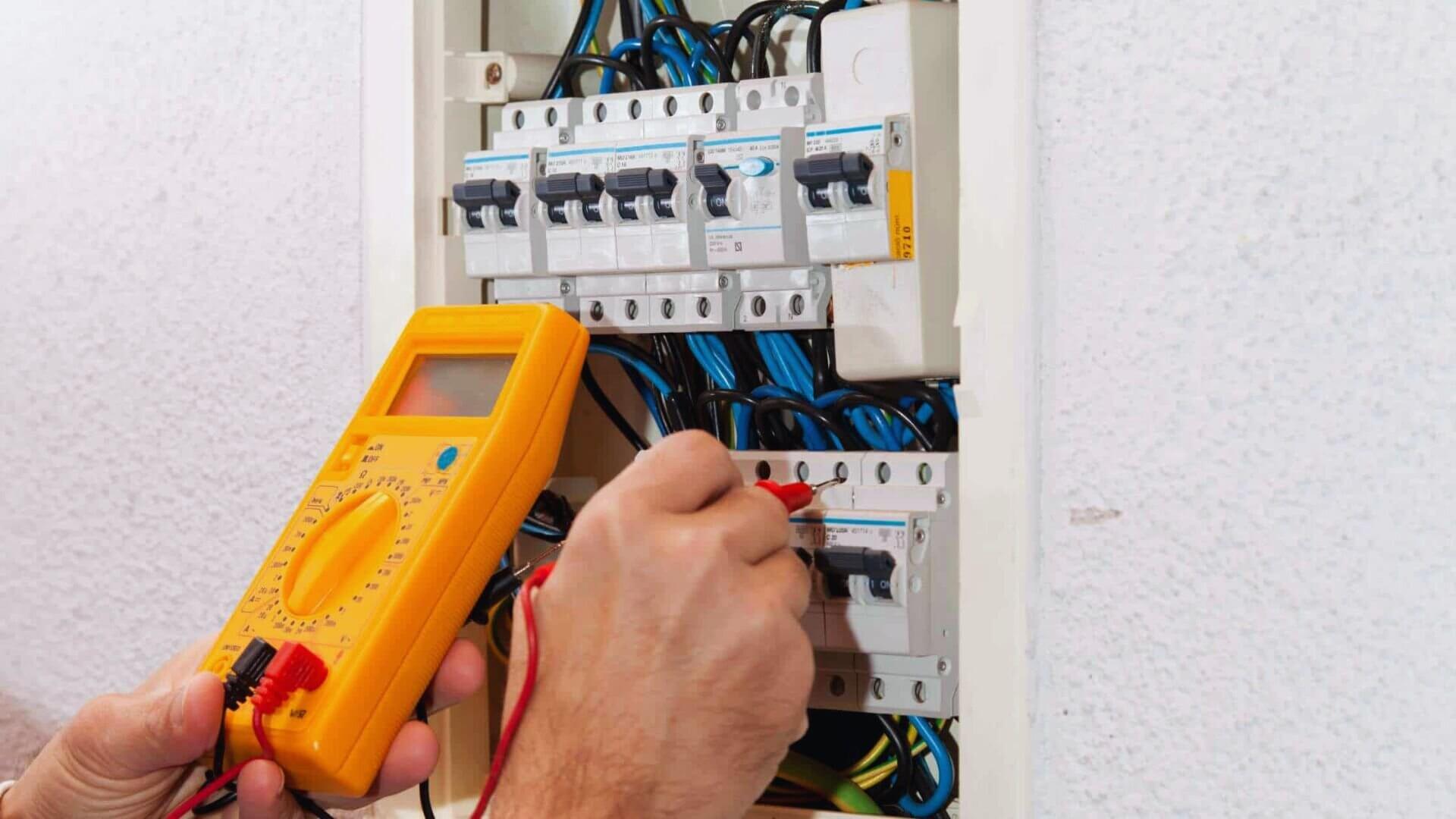An electrical fault happens when the electricity diverts from its normal state. And as a homeowner, you’re bound to face an electrical fault sometimes.
Generally, your home’s current and voltage are kept in check, ensuring your appliances stay safe. But when an electrical fault hits, a huge surge of current can zap through, potentially damaging your gadgets.
So, without much ado, let’s get into this guide to help you find electrical faults and keep your home (and electrical appliances) safe and sound. Learn more about residential wiring guide. Remember to call a professional electrician immediately after discovering an electrical fault in your home.
Common Electrical Faults at Home
The most common types of electrical faults found at home are open circuit and short circuit electrical faults, which can be symmetrical or asymmetrical. Now, let’s get to know about these faults in detail.
Open Circuit Faults

Open circuit faults are caused when one or more of the conductors in an electrical system fail. Common cable failures, including overhead lines, failure in one or more phases of the switch, or the melting of the fuses or conductor, are some of the most common causes of this fault.
Also known as series faults, open circuit faults are asymmetrical, except for a three-phase open circuit fault.
Causes
- Failure of one or more phases of the circuit breaker
- Melting of fuses or conductors in one or more phases
- Joint failures of cables or overhead lines
Effects
- Irregular operation of the system
- Posing a danger to both persons and animals
- This leads to exceeding values of voltage in parts of the system
- Insulation failures
- It might cause short-circuit faults
While open circuit faults give you a bit more wiggle room compared to short circuits, it’s best to sort them out pronto to avoid any further damage to the system.
Short Circuit Faults
In technical terms, a short circuit fault can be explained as an abnormal connection of low impedance between two points of different potential, whether caused automatically or intentionally.
Also known as shunt faults, short circuit faults should not be ignored for long periods. Since they cause an abnormally large amount of current to flow through transmission lines, transient circuit faults can cause severe damage to your electrical appliances and equipment.
Causes
- Internal factors include insulation age, transmission line failure, transformer, generator, and other electrical equipment insulation deterioration, faulty installation, and poor design.
- External factors include insulation failure caused by lighting surges, mechanical damage, and equipment overloading.
Effects
- Can cause fire or explosion in transformers or circuit breakers
- Can overheat equipment, leading to insulation failure
- Restriction or blockage of power flow
- Operating voltages go above or below their expected levels
Signs of Electrical Problems
Even if you’re not a certified electrician, you can still look for some indicators that will tell you whether your home has an electrical fault. Since a circuit fault generally has a reason behind it, you can often find a visual indicator of an electrical fault.
1. Dimming Or Flickering Lights
Dimming or flickering lights can be pretty irritating. But they can also be a visual indicator of an electrical fault in your home. More often than not, the culprit is a loose light bulb. This can easily be fixed by twisting the bulb and ensuring it is securely linked to its socket.
This can also be caused by a lack of stable current in your electrical system due to an electrical fault or faulty lighting circuit. Since high-wattage bulbs require a lot of power to function correctly, low electrical current can lead to subpar performance.
2. Damaged Electrical Wires

An electrical wire can easily get damaged if it is always exposed to the natural elements. Damage can also be caused by rats, whose favourite food is decent wires. Another reason could be constant tension or scratching on the rubber.
If left unattended for an extended period, damaged electrical wires can pose a severe threat to the working of your home’s electrical system. The damage is usually visible unless it’s too minor, in which case you might accidentally get an electric shock. Either way, call a professional electrician to fix it as soon as you are in the know.
3. Discolouring Of The Electrical Switch Or Outlet Casing
You might spot scorch marks or discolouration—black or dark brown—on your electrical switch or outlet casing after a burn. In worse cases, these marks might even spread to the wall around the switch or outlet.
Additionally, if the casing is made of plastic, it might melt due to too much heat. You can also notice a burning when the outlet is too hot to touch or a buzzing sound whenever you switch it on. So, to protect yourself and your appliances, avoid using the outlet till a professional electrician checks it out.
4. Faulty Working Of Electrical Appliances
Malfunctioning appliances are clear indicators of an electrical fault. Similar to flickering lights, a low system load might be the culprit. If you notice a tingling sensation or catch a whiff of something burning when plugging in an appliance, you’ve got a red flag.
This is why it is vital to use voltage regulators for heavy power appliances. Don’t plug the appliance into the same outlet again to protect it from further damage. Instead, contact a professional electrician immediately to fix the electrical fault.
5. Tripped Circuit Breakers Or A Blown Fuse
Circuit breakers and fuses are mechanisms built into the electrical system to protect it from various electrical faults. If your circuit breaker or fuse is blown or faulty, you should first look there to figure out the problem.
A circuit breaker trips, and a circuit fuse blows when a more-than-normal current flows through the circuit. This protects you and your electrical appliances from electric shocks. Once a trip occurs, you should begin to detect where the electrical fault lies.
After the fault has been detected and solved, you can replace the fuse.
How to Troubleshoot Electrical Problems
Troubleshooting electrical problems can be daunting for someone who is not an electrician. After all, we’re all scared of electric shocks. But it doesn’t have to be that scary. Here is a simple step-by-step guide for you to follow to troubleshoot electrical problems in your home safely and accurately.

1. Turn All The Circuit Breakers Off
A circuit breaker trip occurs whenever there is any electrical fault in the system. If the power to your entire home is cut off (through no fault of your electricity provider), the main switch in your switchboard might have tripped and turned off. So, you first need to switch the circuit breakers off.
2. Turn The Main Safety Switch On
After all the circuit breakers have been switched off, you can turn the main safety switch on the switchboard. You’ll now notice that electricity is being provided to your home, although your appliances and fixtures will still not have access to any power.
3. Switch Every Circuit Breaker On Individually
After the main switch has been turned on, you can switch on each circuit breaker. Be careful to switch all of them on individually, i.e., one by one.
4. Detect The Faulty Circuit
Remember how we told you to switch on each circuit breaker individually? Well, that will help you figure out which one is the faulty circuit. The circuit which turns back off after you turn it on is the faulty one. Hence, some parts of this circuit are causing an electrical fault.
5. Turn Off All The Switches Again
After you have detected the faulty circuit, you must turn off all the switches again.
6. Switch the electricity back on
Now, you can regain the power on the circuits that are not tripping. First, turning on the main switch does this, and then turning on the circuit breakers, except for the defective circuit.
7. Get Help From A Professional Fault Finding Electrician
Yes, you might have the power back on to your house. But all the appliances and fixtures connected to that one faulty circuit still won’t work. So, you must call a professional electrician immediately for electrical fault finding to fix that defective power circuit.
Safety Precautions when Dealing with Electrical Faults

Even though we have simplified troubleshooting an electrical fault, you must follow some safety precautions when dealing with electrical faults. After all, it is electricity you are dealing with here. You don’t want to take it lightly.
But don’t worry! Here are some simple safety precautions to follow to protect yourself and your electrical appliances:
- Switch off the main power from the fuse box. Make a note nearby to ensure no one accidentally or unknowingly turns the main power on.
- Avoid water at all times when working with electricity. Never touch any circuit or switch with wet hands, as this might cause an electric shock.
- Always use insulated tools like rubber gloves and safety goggles while working with any electrical circuit.
- Never use a steel or aluminium ladder if working on an electrical circuit or receptacle at a height. If an electrical surge occurs, it will ground you, and the entire current will pass through your body to the Earth.
- Keep your working area free from any flammable or combustible substances.
- Ensure all the electrical work follows your area’s electrical code and regulations.
- Ensure you always use a circuit breaker or fuse with a suitable electric current rating. A circuit breaker or a fuse is there to protect your electrical system in case of a fault. It will not work well if the current rating is not appropriate.
DIY vs. Hiring a Professional
DIYing issues at home have become extremely popular these days. And fixing an electrical fault or problem at home is appealing, especially if you are financially bound. After all, how hard can it be?
Well, as it turns out, very.
Electrical faults are no child’s play. You might seriously threaten your life or electrical appliances if you don’t know what you are doing.
If, for whatever reason, you decide to get down to the electrical business yourself, make sure you follow all the safety precautions written above to protect yourself, your appliances, and the entire electrical system from shocks. Check and double-check that the main power is turned off.
Another way to ensure safety is to get a non-contact voltage tester. This handy tool will help you check whether the lines you are working on are live.
However, the best option is to hire a professional electrician. After all, you never know what you are dealing with.
Preventing Electrical Faults
It’s always smarter to prevent issues before they occur. Here are some handy tips to keep electrical faults at bay:
1. Always Hire A Licensed Electrician
No one could mess up the electrical system in your home more than an unlicensed electrician. So, hiring an experienced professional electrician is vital to ensuring your home’s electrical system remains safe and secure.
2. Check Your Wires For Damage Periodically
Damaged wires are some of the biggest culprits behind electrical faults. You want to cut them off before they can cause too much damage, and you should also regularly check your wires for damage.
3. Put Heavy-Power Appliances On A Dedicated Electric Circuit
Energy- or power-intensive electrical appliances should be installed in their dedicated electrical circuits. This ensures they don’t suck up the energy from the entire electrical system. For example, water heaters, air conditioners, etc.
4. Don’t Overload Your Circuits
If you connect too many appliances or equipment to one circuit, you overload it. Thus, the electrical demand for these appliances starts to exceed the maximum electric current supply.
Shedding Light on Electrical Faults: A Homeowner’s Guide to Diagnosis and Solutions
As you may have surmised from this article, electrical faults in your home severely threaten you, your family, and your electrical appliances. Now that you know how to detect those faults, you should always be on the lookout for any problems.
And if you encounter an electrical fault, remember not to DIY fix it (unless required). Instead, call a professional electrician and let them handle the electrical problems.
The safety of our customers is of the utmost importance to us at Enersol Electrical. It doesn’t matter whether it’s a simple installation or an urgent repair. Our Gold Coast electricians deliver the highest level of care and safety. So, if you need an electrician on the Gold Coast, call our team!
Frequently Asked Questions (FAQs)
1. Are circuit breakers and fuses the same thing?
Circuit breakers and fuses perform the same function as the flow of electric current. But they do so differently. A circuit breaker flips automatically, literally breaking the circuit. You can flip the circuit breaker the other way, and you are good to go. On the other hand, a fuse has a filament that melts, breaking the current flow. You have to replace a fuse after it melts.
2. What is a GFCI outlet?
GFCI stands for Ground Fault Circuit Interrupter. It protects you from an electric shock in an area with moisture, like unfinished basements, kitchens, bathrooms, or sinks. It usually has two buttons: ‘ test’ and ‘reset.’